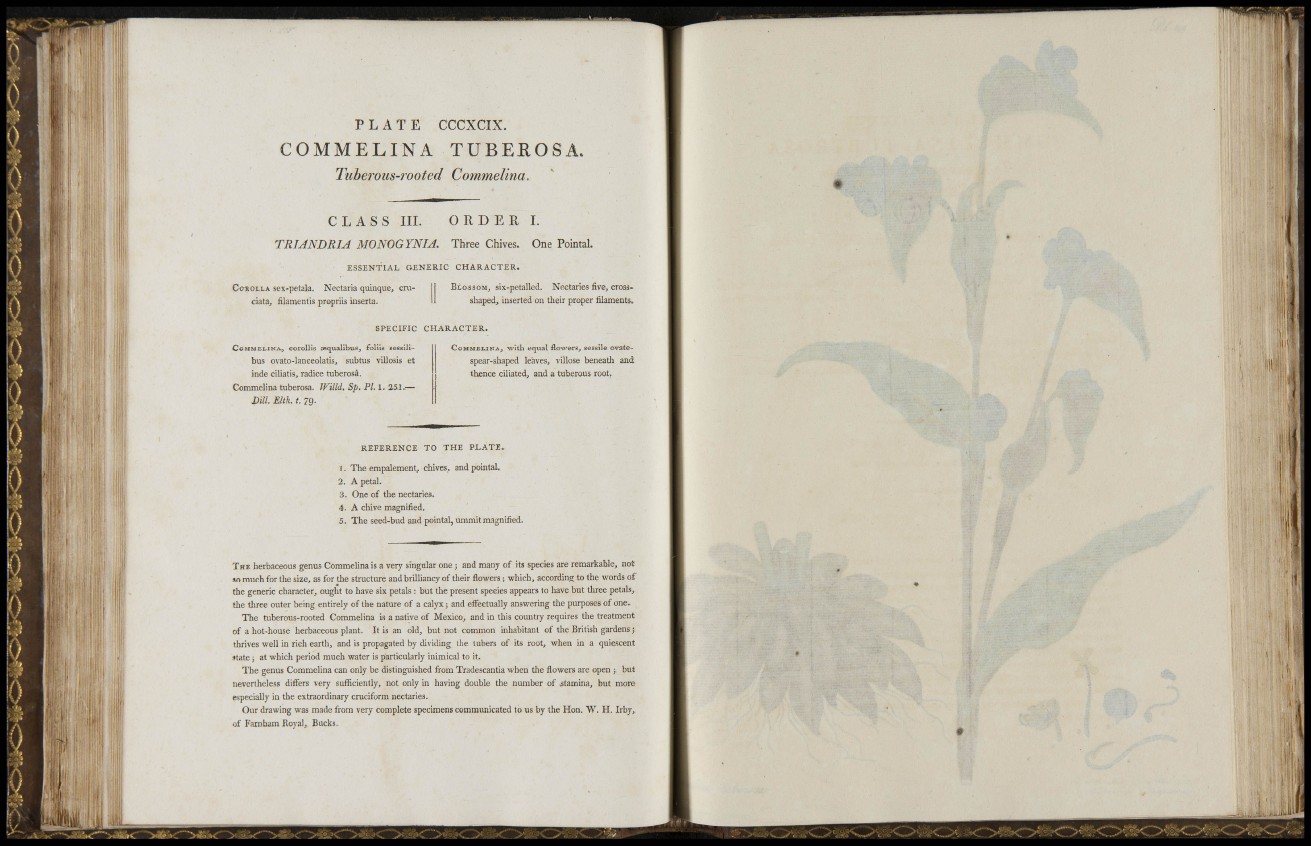
P L A T E CCCXCIX.
C O M M E L I N A TUBEROSA.
Tuberous-rooted Commelina.
C L A S S III. ORDER I.
TRIJNDRIA MONOGYNIA. Three Chives. One Pointal.
ESSENTIAL GENEBIC CHARACTER.
Con OIL A sex-petala. Nectaria quinque, cruciata,
filamentis propriis inserta.
BLOSSOMJ six-petalled. Nectaries five, crossshaped,
inserted on tlieir proper filaments»
SPECIFIC CHARACTER.
COMMELINA, corollis sequalibus, foliis sessiiibus
ovato-lanceolatis, subtus villosis et
inde ciliatis, radice tuberosa.
Commelina tuberosa. Willd. Sp. Pl. 1. 251.—
Dill. Elth. t. 79.
COMMELINA, witli equal flowers, sessile ovatespear
shaped leaves, villose beneath and
thence ciliated, and a tuberous root.
REFERENCE TO THE PLATE.
1. The empalement, chives, and pointai.
2. A petal.
3. One of the nectaries.
4. A chive magnified.
5. The seed-bud and pointai, ummi t magnified.
THE herbaceous genus Commelina is a very singular one ; and many of its species are remarkable, not
so much for the size, as for the structure and brilliancy of their flowers; which, according to the words of
the generic character, ought to have six petals : but the present species appears to have but tliree petals,,
the three outer being entirely of the nature of a calyx; and effectually answering the purposes of one.
The tuberous-rooted Commelina is a native of Mexico, and in this country requires tlie treatment
of a hot-house herbaceous plant. It is an old, but not common inhabitant of tlie British gardens
thrives well in rich earth, and is propagated by dividing tlie tubers of its root, when in a quiescent
state; at which period much water is particularly inimical to it.
The genus Commelina can only be distinguished from Tradescantia when the flowers are open ; but
nevertheless differs very sufl5ciently, not only in having double the number of stamina, but more
especially in the extraordinary cruciform nectaries.
Our drawing was made from very complete specimens communicated to us by the Hon. W. H. Irby,
of Farnham Koyal, Bucks.
;'I!i fi